The time signature 6/4 is a well known meter in classical music and it has been used many times in popular music. 6/4 contains measures (or bars) that have 6 quarter-note beats. Music in 6/4 time often has a pendulum motion to it, similar to 6/8, but at a slower tempo.
We’re going to dive straight into 6/4 time, but you can find more info on what a time signature is in our complete guide to meters.
What is Time Signature 6/4?
The time signature or meter 6/4 is show in the music as a 6 above a 4.

This comes before the music starts but after the clef and key signature. The ‘6’ stands for 6 beats per measure and the ‘4’ tells us that each beat is a quarter note. This means that the notes in each measure will add up to six quarter notes.
See if you can spot the six quarter-note beats in this line of music.

Now here it is with the beats labelled.

How to count in 6/4
6/4, like all meters, has a distinctive feel to it. We count 6/4 as 1..&…a…2…&…a and this is because the six quarter notes are grouping into threes. The short piece below contains more complex rhythms with a variety of note lengths, but they would still be counted in the same way. Can you spot where each beat falls?
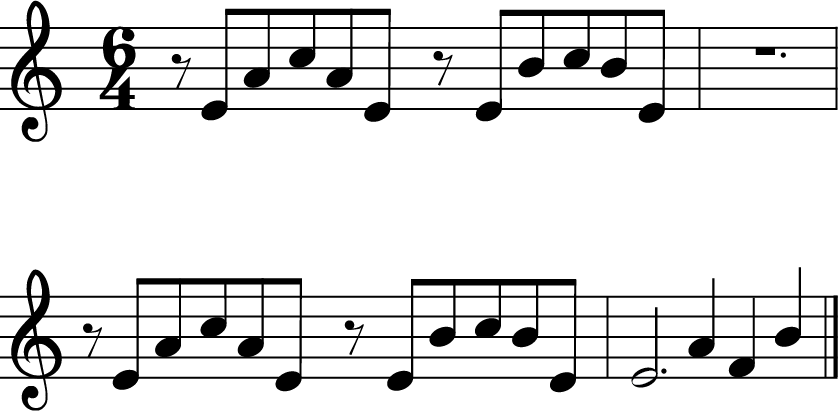
Now here it is with the beats added.
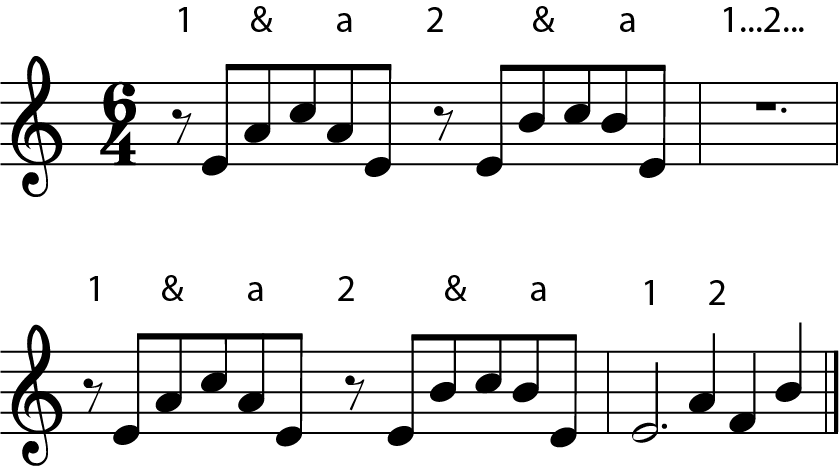
6/4 is a Compound, Duple Time Signature
There are three broad types of time signature: simple, compound and irregular. Simple time signatures have strong beats that divide into two. Compound time signatures have strong beats that divide into three and irregular time signatures have a mixture of beats.
In 6/4, the quarter notes are grouped into two strong beats, each being worth a dotted half note (minim). This makes 6/4 a Compound, duple time Signature. It is Compound because each strong beat divides into three quarter-notes. It is duple because there are two strong beats per measure (bar).
To learn more about the differences check out our ultimate guide to time signatures.
The notes below show how each strong beat divides into three quarter-notes.

Songs with a 6/4 Time Signature
Hozier – Take Me To Church
Chopin – Nocturne Op9 No.1
The Police – Synchronicity 1
Ear Training and Meters
To develop as a musician you’ll want to be able to recognise time signatures by ear. This is where ear training comes in, as the more you practice, the better your’ll get.
My recommendation for this is Tonegym as they have a comprehensive and fun program for training your ears. It’s what has gotten the best results with for my own students.
They have a great game called ‘Rhythmania’, were you have to read rhythms in different meters and tap them back using the spacebar. I like how Tonegym structure the game so it always gives you the right level of challenge.
For an in-depth look at ear training, here’s my full review of Tonegym.
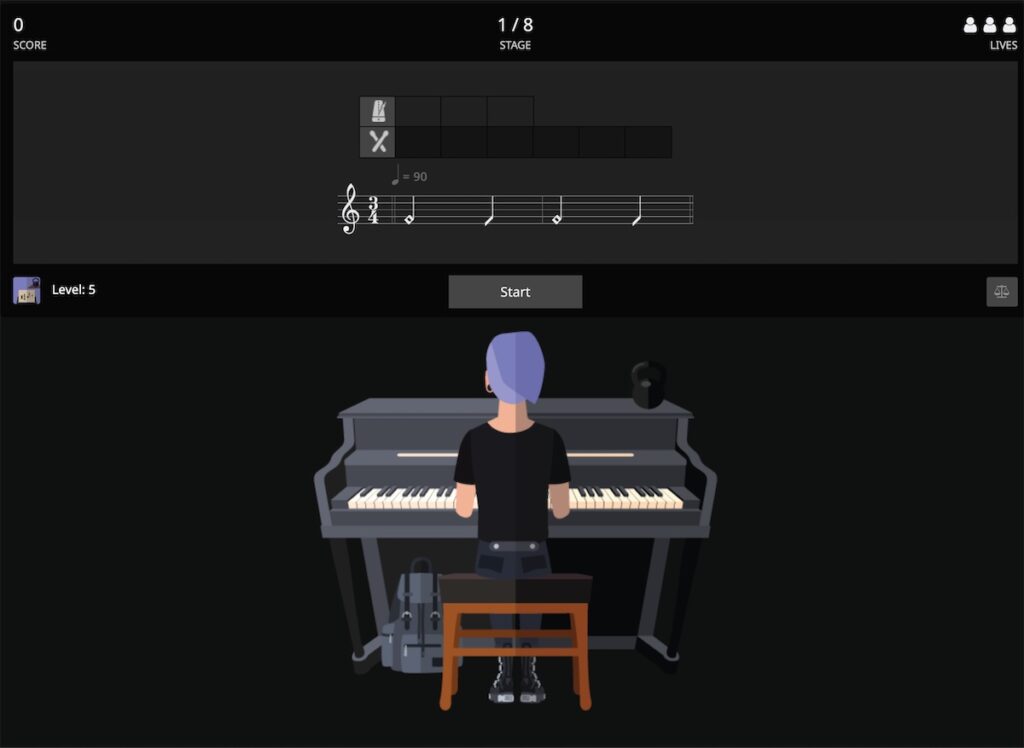
What’s the difference between 6/4 and 3/2
3/2 is a simple, triple time signature. It can be easily confused with 6/4 as the notes in a measure of 3/2 and 6/4 will both total to 6 quarter notes (crotchets). However, the way they are counted differs. 3/2 is counting as 1…&…2…&…3….& whereas 6/4 is counting as 1…&…a…2…&…a. The difference is because 3/2 has three strong beats and 6/4 has two strong beats per beat.
The below image shows what we would have to do to rewrite a 3/2 melody in 6/4. To keep the groupings clear we need to rewrite the half note as tied quarter notes.
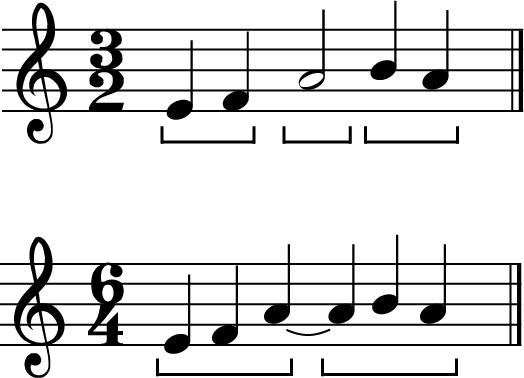
What’s the difference between 6/4 and 6/8
6/4 and 6/8 are very similar time signatures. 6/4 and 6/8 have two strong beats per measure and these are each divided into three. The only difference is that 6/4 has 6 quarter note beats and 6/8 has 6 eighth note beats.
As a rough rule, 6/8 is used for faster pieces and 6/4 is used for slower pieces. This is not strictly applied but it holds true for most classical music. At the end of the day it is up to composers and transcribers which notation they want to use.
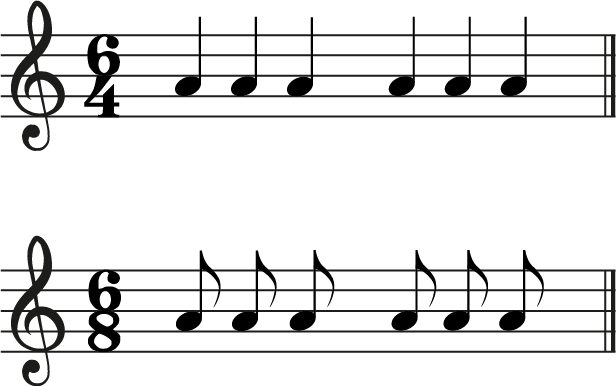
What next…?
If you want to learn more about time signatures, check out our complete guide to meters.
